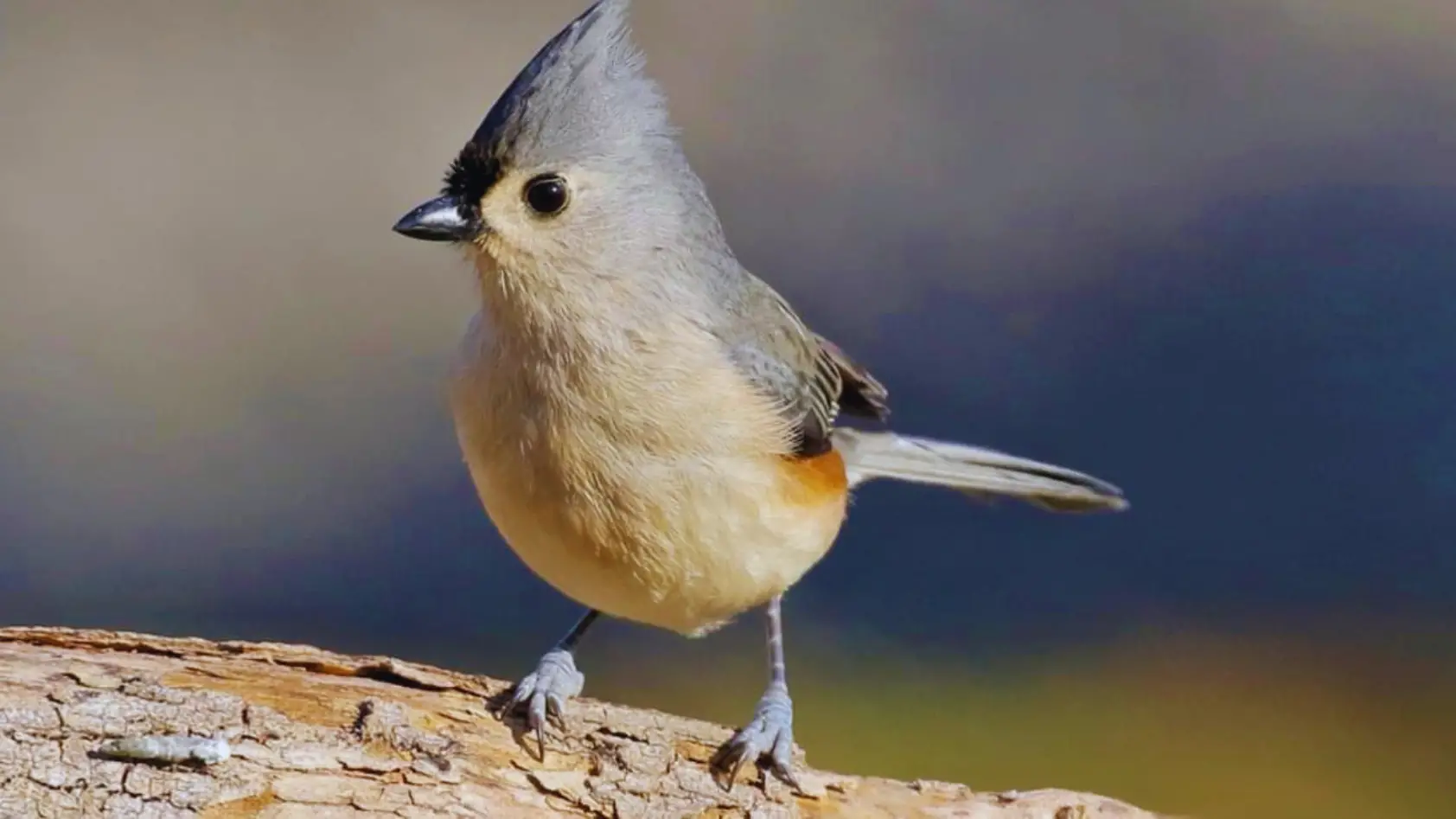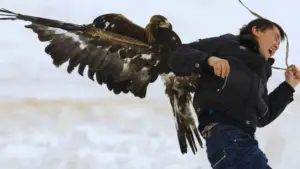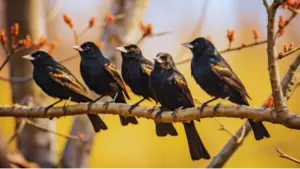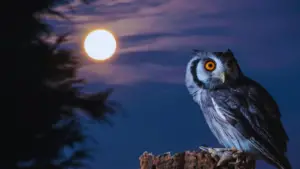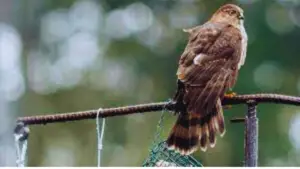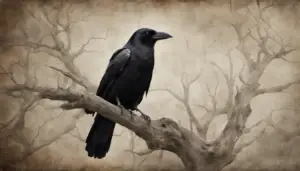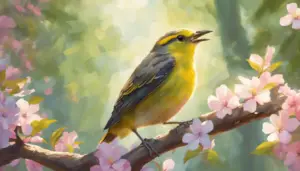Welcome to our comprehensive guide to crested birds! Birdwatchers, environmentalists, and pet owners all adore these lovely creatures. In this article, you’ll learn everything you need to know about crested birds, from their behavior and habitats to their migration patterns and cultural significance.
Key Takeaways
- Discover the variety of crested bird species and how to identify them
- Learn interesting facts about crested birds that you may not have known before
- Understand the behavior and characteristics of crested birds, including their mating rituals, feeding habits, and social interactions
- Explore the diverse habitats where crested birds can be found and why conservation efforts are crucial
- Get tips for photographing and observing crested birds in their natural habitats
- Learn about the vocalizations, migration patterns, and cultural significance of crested birds
- Understand the challenges and responsibilities of caring for crested birds in captivity
What are Crested Birds?
If you’re new to the world of birdwatching, you may be wondering what makes a bird “crested.” Simply put, crested birds are any species that have a tuft or crest of feathers on their heads. These feathers can stand upright or be flattened against the head, depending on the bird’s behavior and mood.
There are many species of crested birds found all over the world, each with their own unique physical characteristics and behaviors. Some of the most well-known crested bird species include the cockatoo, parrot, and pheasant. These birds are often kept as pets due to their beauty and charisma, as well as their ability to bond with humans.
Identifying Crested Birds
Identifying crested birds can be challenging, as their crests can vary in shape and size depending on the species. In some birds, the crest is a prominent feature that stands out from the rest of the feathers, while in others, it may be more subtle and blend in with the head plumage.
One way to identify a crested bird is to look for a tuft of feathers on the top of the head. Depending on the species, this tuft may be long and flowing, or short and spiky. Crested birds may also have distinct color patterns or markings that can help with identification.
If you’re having trouble identifying a crested bird, it can be helpful to consult a field guide or seek the advice of an experienced birdwatcher. With practice, you’ll soon become an expert at spotting these fascinating feathered friends!
Fascinating Crested Bird Facts

Whether you’re a bird enthusiast or simply appreciate the beauty of nature, crested birds are undoubtedly fascinating creatures worth learning about. Here are some intriguing facts about crested birds that you may not have known:
- The crested pigeon, found in central and southern Australia, has a unique whistling call that sounds like “toowhit-tu-whoo.”
- The crested caracara, a bird of prey found in the Americas, is known for its fearless nature and has been observed stealing food from other predators such as vultures and eagles.
- The tufted puffin, a crested seabird found in the Pacific Ocean, uses its brightly colored bill as a signal for mate selection during breeding season.
- The hoopoe, a crested bird found in Europe, Asia, and Africa, has one of the most unique crest displays among birds – it can raise and lower its crest at will, showing off its striking black and white stripes.
- The crested guineafowl, found in sub-Saharan Africa, is known for its loud, raucous call that sounds like “kek-kek-kek.”
These are just a few of the many interesting facts about crested birds. With their unique physical features and behaviors, it’s easy to see why these birds are so captivating and beloved by birdwatchers and nature enthusiasts around the world.
Crested Bird Behavior
Crested birds exhibit a variety of interesting behaviors that make them fascinating to observe in their natural habitats. Understanding their behavioral patterns and social interactions can provide insights into their lives and help us appreciate these feathered friends even more.
Mating Rituals
The crests of male and female crested birds serve different purposes during mating rituals. Males often display their crest feathers to attract a mate, while females use their crests to communicate with their partners. During courtship, males may also perform elaborate displays such as dancing or bringing food to the female.
Feeding Habits
Crested birds have a diverse diet depending on their species and habitat. Some species feed primarily on insects and small invertebrates, while others consume seeds, fruits, and nuts. Some crested birds, such as the crestless curassow, have specialized beaks that allow them to crack open hard nuts and seeds.
Social Interactions
Crested birds often live in flocks or family groups, exhibiting complex social interactions. Some species display dominance hierarchies, where individuals establish a pecking order based on their size, strength, and behavior. Others have cooperative breeding systems, where non-breeding individuals help raise the offspring of the dominant pair.
Defensive Behaviors
Crested birds have evolved an array of defensive behaviors to protect themselves from predators and threats. Some species use their crests to intimidate rivals or predators, making themselves appear larger and more threatening. Others use alarm calls or feign injury to distract predators and protect their nests and offspring.
Overall, the behavior of crested birds provides an intriguing glimpse into the complex lives of these feathered creatures. Whether through courtship displays, feeding habits, social interactions, or defensive behaviors, crested birds continue to captivate researchers and birdwatchers alike.
Crested Bird Habitats

Crested birds can be found in a variety of habitats, from dense forests to open grasslands and wetlands. Their preferred habitats are often characterized by tall trees, with some species also occupying shrublands and savannas. The availability of food, nesting sites, and water sources is also a critical factor in determining crested bird distribution.
Some species of crested birds, such as the sulphur-crested cockatoo, are adapted to urban environments and can be found in parks, gardens, and even in residential areas. However, the majority of crested bird species are found in their natural habitats, often in remote and hard-to-reach regions of the world.
The tropical rainforests of South America and Southeast Asia are home to a plethora of crested bird species, including toucans, hornbills, and cock-of-the-rock. These forested areas provide ample food sources, nesting sites, and protection from predators.
In Africa, crested birds can be found in a range of habitats, from dense forests to open grasslands. The iconic crested crane, often depicted in African art, is commonly found in savannas and wetlands.
Crested birds have also adapted to life in the mountains, with species such as the Himalayan monal and the Andean cock-of-the-rock inhabiting high-altitude forests and scrublands. These birds have evolved unique physical and behavioral adaptations to survive in the harsh mountain environments.
Conservation of Crested Birds
It is vitally important to conserve crested bird species, as they face a range of threats to their survival. Habitat loss, climate change, and human activities such as hunting and poaching all pose significant challenges to their populations.
Conservation efforts are underway around the world to protect crested birds and their habitats. This includes the establishment of protected areas, restoration of degraded habitats, and efforts to reduce illegal hunting and trade. Many organizations and individuals are also involved in public awareness campaigns to raise awareness of the plight of crested birds and encourage action to protect them.
Challenges in Crested Bird Conservation
Despite these efforts, many challenges remain when it comes to conserving crested birds. One major challenge is the lack of information about many species, including their distribution, population size, and specific habitat requirements. This makes it difficult to develop effective conservation strategies.
Another challenge is the limited resources available for conservation efforts, both in terms of funding and personnel. Many conservation organizations and government agencies struggle to secure the resources they need to adequately protect crested birds and their habitats.
The Importance of Conservation Awareness
Conservation awareness is a critical component of crested bird conservation. By raising awareness of the threats that these birds face, and the importance of protecting them, we can inspire people to take action to help conserve them.
Increasing public engagement with crested bird conservation can also help to generate support for conservation initiatives and increase funding streams for conservation organizations and government agencies. This can lead to more effective protection for crested birds and their habitats.
Ultimately, the conservation of crested birds depends on the concerted efforts of individuals, organizations, and governments around the world. We must all work together to protect these magnificent birds and ensure that they continue to grace our skies for generations to come.
Photographing Crested Birds
If you’re a nature photographer, capturing images of crested birds can be a fun and rewarding experience. While photographing birds in general can be challenging and requires patience, capturing great shots of crested birds can be particularly thrilling due to their unique physical attributes.
Here are some tips and techniques for photographing crested birds:
- Know your subject: Learn as much as you can about the crested bird species you want to photograph, including their behavioral patterns, preferred habitats, and vocalizations. This knowledge will help you anticipate their movements, and you’ll be better equipped to capture their unique behaviors and postures on camera.
- Choose the right location: Depending on the species you’re photographing, crested birds can be found in a variety of habitats, such as forests, grasslands, or wetlands. Research the best locations for your target species and visit during optimal times of day for bird activity.
- Be patient and stealthy: To photograph crested birds successfully, you need to be patient and quietly approach them without disturbing their natural behavior. Avoid making sudden movements and use camouflage gear to blend in with your surroundings.
- Use the right equipment: Good bird photography typically requires special equipment, including a telephoto lens to capture crisp, detailed close-up shots. Experiment with different lenses and camera settings to achieve the desired effect.
- Consider lighting and composition: Pay attention to lighting conditions when photographing crested birds, as lighting can have a big impact on the quality of your shots. Use natural light whenever possible, and try to compose your shots with an eye towards interesting backgrounds and complementary colors.
- Respect the birds: Remember that crested birds, like all creatures, deserve our respect and protection. Do not disturb them or their habitats, and avoid getting too close for prolonged periods.
With the right techniques and preparation, photographing crested birds can be a rewarding experience that results in stunning images of these beautiful creatures in their natural habitats.
Bird Watching for Crested Bird Enthusiasts
If you’re a birdwatching enthusiast looking to observe crested birds, there are several tips and techniques you can use to increase your chances of sightings.
Choose the Right Time and Place
Timing and location are crucial for successful birdwatching. Crested birds are most active early in the morning and late in the afternoon, so plan your outings accordingly. Research the best areas for crested bird sightings, such as forests, wetlands, or grasslands.
You may also want to invest in a good pair of binoculars or a spotting scope to get a closer look at these elusive birds.
Identify Different Species
There are many species of crested birds, each with its unique physical features and behaviors. Learn to identify the different species and their calls by purchasing a field guide or taking a birding class. This knowledge will help you spot and recognize crested birds in the wild.
Practice Respectful Bird Watching
When observing crested birds, it’s essential to respect their space and habitat. Keep a safe distance from nests and nesting sites, and avoid making loud noises or sudden movements that could startle or disturb the birds. Remember, birdwatching is a privilege, and we must do our part to protect these beautiful creatures.
Join a Bird Watching Community
Joining a local bird watching community can be a great way to connect with other enthusiasts and learn more about crested birds. Many birdwatching groups offer guided tours and field trips, as well as opportunities for citizen science projects and conservation efforts.
Now that you know some of the best birdwatching tips for crested bird enthusiasts, get out there and explore the world of these fascinating feathered friends!
Crested Bird Vocalizations
Crested birds are known for their distinctive vocalizations, which they use to communicate with other birds, mark their territory, and attract mates. Understanding the different types of vocalizations can provide insight into the behaviors and habits of crested birds.
Some common types of crested bird vocalizations include:
- Songs: Male crested birds often sing complex songs, which they use to attract mates and establish their territory. These songs can vary in length and complexity depending on the species.
- Calls: Crested birds use a variety of calls to communicate with each other, such as alarm calls, contact calls, and begging calls for food.
- Rattles: Some crested birds, such as woodpeckers, use rattling sounds to drum on trees or other surfaces, which they use to attract mates and establish their territory.
It is important to note that vocalizations can vary greatly depending on the species of crested bird, and even within the same species, vocalizations may have different meanings. In general, however, understanding the different types of vocalizations can provide valuable insights into the behavior and communication of crested birds.
“It is fascinating to observe the complex vocalizations of crested birds and the unique ways they use these sounds to communicate with each other.”
Crested Bird Migration Patterns
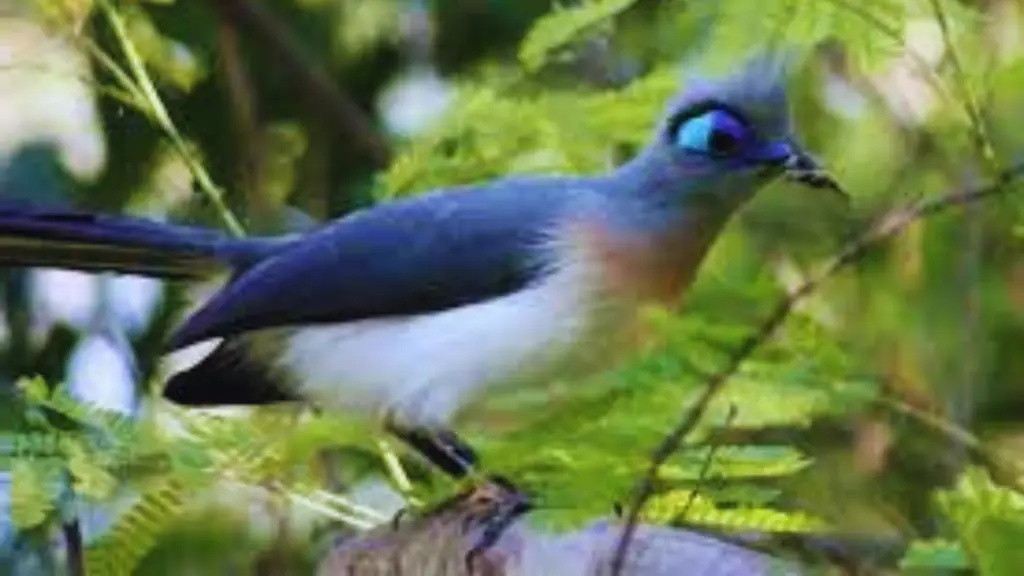
If you’re interested in the seasonal movements of crested birds, you’ll want to learn about their migration patterns. These birds often fly long distances to reach their breeding and wintering grounds, sometimes crossing entire continents and spanning several months.
The exact timing and route of migration can vary depending on the species and location, but many crested birds follow similar patterns. For example, some species of crested birds in North America migrate from their breeding grounds in the northern regions to their wintering grounds in the south. This usually happens in the fall and spring, and can result in large flocks of birds moving together.
Other crested bird species, such as those found in Europe and Asia, have more complex migration patterns. Some birds fly south for the winter, while others move to different parts of their breeding range or even travel to other continents. Food availability, temperature changes, and breeding conditions are just a few of the variables that can affect these movements.
Crested birds have adapted to make the long, strenuous journeys of migration. They often consume large amounts of food before embarking on their journey, and may fly at high altitudes to take advantage of favorable winds and avoid obstacles. Some species may even fly non-stop for days or weeks!
Migration is a remarkable aspect of crested bird behavior, and studying their movements can provide valuable insights into the biology and ecology of these fascinating creatures.
Crested Birds in Mythology and Symbolism
Crested birds have been revered and celebrated in various cultures throughout human civilization. These majestic birds have been a part of mythologies and folklore across many cultures and regions worldwide. From ancient Egypt to modern-day Japan, crested birds have taken on a wide array of meanings and symbolism.
Egyptian Mythology
One of the oldest depictions of a crested bird comes from ancient Egypt. The Pharaohs believed that the crested ibis, or the African sacred ibis, was a symbol of Thoth, the god of wisdom, knowledge, and writing.
The Egyptians mummified thousands of crested ibis as an offering to Thoth, and they depicted the god with the head of an ibis. According to Egyptian mythology, Thoth created language, writing, and mathematics and acted as the mediator between the gods and humans.
Chinese Symbolism
In China, the crested crane is a symbol of longevity, prosperity, and immortality. The crested crane’s elegance and grace have made it an object of admiration and inspiration, and it is often featured in Chinese art and literature.
The Chinese believe that the crested crane can live for a thousand years, and that it brings good luck and fortune to those who see it. The crane is also associated with harmony and peace, and it is sometimes depicted carrying a pine tree, which represents longevity.
Japanese Culture
In Japanese culture, the crested kingfisher is a symbol of good luck, prosperity, and strength. The kingfisher is known for its bright colors and sharp beak, which have made it an inspiration for artists and craftsmen for centuries.
The kingfisher is sometimes depicted as a messenger of the gods, and it is believed to bring good fortune and prosperity to those who see it. The Japanese also saw the kingfisher as a symbol of strength and resilience, as it was able to survive even in the harshest of environments.
“In many cultures, crested birds have been seen as symbols of wisdom, prosperity, longevity, and good luck.”
Crested Birds in Captivity
If you’re considering keeping a crested bird as a pet, it’s essential to understand the responsibilities that come with it. Crested birds are intelligent and social creatures, and their well-being requires more than just a cage and regular feeding.
Firstly, it’s crucial to provide ample space for your crested bird to move around and exercise. A cage that’s too small can lead to health issues and behavioral problems. Additionally, the cage should have enough perches and toys to keep the bird entertained and mentally stimulated.
It’s also important to provide a balanced and varied diet for your crested bird. In the wild, they eat a range of foods, including fruits, insects, and seeds. A diet consisting solely of seeds can lead to malnutrition and health issues. Consult with a veterinarian or a bird nutritionist to ensure your bird is getting the right nutrients.
Regular interaction and socialization are also essential for your crested bird’s happiness and well-being. These birds thrive in a flock environment, so it’s important to spend time with them and provide opportunities for socialization. However, be aware that not all crested birds may be comfortable with handling or physical contact. It’s important to observe your bird’s body language and respect their boundaries.
Finally, it’s crucial to research and understand the specific needs of the crested bird species you’re interested in keeping. Different species have different requirements for housing, nutrition, and socialization, so it’s essential to do your homework before bringing home a pet.
Conclusion
Throughout this guide, you have learned about the fascinating world of crested birds. From their unique physical features to their complex behaviors and diverse habitats, these feathered friends are truly remarkable creatures that captivate the imagination.
By understanding their behavior, habitats, and vocalizations, you can enhance your birdwatching experience and gain a deeper appreciation for their beauty. Additionally, you can contribute to their conservation by supporting ongoing efforts to protect their natural habitats and raise awareness about the importance of their role in the ecosystem.
Whether you are a seasoned birdwatcher or simply fascinated by the world of avian life, crested birds have much to offer. Take the time to explore their world and discover the many wonders that await.
Crested Birds: FAQs
Q: What are crested birds?
A: Crested birds are a category of bird species that have distinctive crests or tufts of feathers on their heads. These crests can vary in size, shape, and color, and are often used for various purposes such as display, communication, and camouflage.
Q: What are some examples of crested bird species?
A: Some examples of crested bird species include the cockatoo, cockatiel, crested tit, crested barbet, crested guinea fowl, and many more. Each species has its own unique characteristics and can be found in different parts of the world.
Q: How can I identify crested birds?
A: Crested birds can be identified by their distinct crests or tufts of feathers on their heads. These crests can vary in size, shape, and color, and are often a prominent feature of the bird’s appearance. Observing the bird’s behavior, habitat, and other physical characteristics can also help with identification.
Q: What are some fascinating facts about crested birds?
A: Some fascinating facts about crested birds include their ability to mimic human speech, their complex social structures, their unique nesting habits, and their diverse vocalizations. Additionally, some crested birds are known for their impressive displays during courtship rituals.
Q: What are some common behaviors of crested birds?
A: Crested birds exhibit a wide range of behaviors, including social interactions with other birds, intricate courtship displays, foraging for food, and building nests. Some crested birds also engage in flocking behavior, where they gather in large groups for safety and foraging purposes.
Q: Where do crested birds typically live?
A: Crested birds can be found in various habitats around the world. They are often found in forests, woodlands, grasslands, and even urban areas. Some species prefer wetland habitats, while others are adapted to mountainous regions. The specific habitat preferences vary depending on the species.
Q: Why is it important to conserve crested birds?
A: Conserving crested birds is crucial for maintaining biodiversity and preserving fragile ecosystems. Many crested bird species are facing threats such as habitat loss, pollution, and illegal trade. Protecting their habitats and raising awareness about their conservation needs is essential for their survival.
Q: How can I photograph crested birds?
A: Photographing crested birds requires patience, knowledge of their behaviors, and respect for their natural habitats. Observing their movements and habits can help you anticipate photo opportunities. Use longer focal length lenses to capture their details while keeping a respectful distance.
Q: What should I know about bird watching for crested bird enthusiasts?
A: If you’re interested in birdwatching specifically for crested birds, it’s helpful to research the best locations and times for sightings. Familiarize yourself with their unique physical features and vocalizations to identify different species. Binoculars and field guides can also enhance your birdwatching experience.
Q: What are some vocalizations of crested birds?
A: Crested birds have a variety of vocalizations, ranging from melodic songs to loud calls and alarm signals. Some species have specialized calls for mating, territorial defense, and warning others of potential dangers. Exploring recordings and bird guides can help you learn and identify these vocalizations.
Q: Do crested birds migrate?
A: Yes, some crested bird species migrate seasonally. Migration patterns vary depending on the species and their geographical range. Migration allows crested birds to find suitable breeding grounds and access food resources in different locations throughout the year.
Q: What is the symbolism of crested birds in mythology?
A: Crested birds have been depicted in various mythologies and folklore around the world. They often symbolize virtues such as wisdom, beauty, and spirituality. In some cultures, they are associated with gods or are believed to be messengers between humans and the divine.
Q: Can crested birds be kept as pets?
A: Some crested bird species, like cockatoos and cockatiels, can be kept as pets. However, it’s important to note that they require specialized care, including a spacious and enriched environment, proper diet, and social interaction. It’s crucial to research their needs and consider the long-term commitment before getting a crested bird as a pet.

